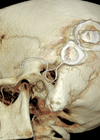How I Do It
Mastoid fistula closure
This article describes a clear and useful technique for the repair of a troublesome mastoid fistula. The clear instructions make this easy to apply in daily practice. Mastoid fistula is a rare condition whereby an abnormal connection develops between a...
Building low-cost high-fidelity simulation for ENT
In this article, the authors describe their ingenious technique to produce affordable yet realistic simulation models for some common ENT procedures. The use of surgical simulation in otolaryngology training has significantly increased in recent years. This is most likely due...
Random-pattern skin flaps: part 1 – advancement flaps
In the first of a short series covering random pattern skin flaps and their use in clinical practice (see Part 2 here, Part 3 here and Part 4 here), Christopher Thompson and Miles Bannister describe in some detail their techniques...
Endoscopic stapes surgery
Traditionally middle ear surgery, including stapes surgery, has been performed using the operating microscope. In this article the authors describe their experience with endoscopic middle surgery and share some of its advantages. Trans-canal endoscopic ear surgery (TEES) is now a...
Triple semicircular canal occlusion and Meniere’s disease: a rising alternative treatment?
Patients with dizziness form a large part of the workload for ENT surgeons. In the overwhelming majority of cases, management will be medical and successful. However, occasionally some patients present a challenge when they have not responded to conventional treatments....
Endoscopic excision of cholesteatoma
In this article Vikranth Visvanathan describes an exciting development on the use of endoscopic technology in complex otological practice. Transcanal endoscopic ear surgery (TEES) is rapidly evolving as a recognised method of addressing middle ear and mastoid pathology. Since its...
Nasal and aural foreign body removal: another technique for a common problem
Trying to remove foreign bodies from the ears and noses of children is something we have all struggled with at various times. Many people have their own top tips, and here Oliver McLaren and Alexander Walkden describe an ingenious way...
Superior semicircular canal dehiscence: transmastoid obliteration
Sometimes patients with dizziness turn out to have slightly more unusual causes of their problem. Thomas Milner and Georgios Kontorinis describe their technique for managing patients who have a diagnosis of superior canal dehiscence as an identified cause of their...
The ‘bus stop’ incision for bone-anchored hearing aid placement: a step-by-step approach to soft tissue preparation
There have been many descriptions of soft tissue preparation in the era when subcutaneous tissue was routinely removed with the Nijmegen technique [1] or with the dermatome [2]. More descriptions continue to evolve with the advent of tissue preservation techniques,...
Partial reconstruction of the pinna
Reconstruction of the pinna is one of the most challenging procedures in facial plastic surgery. Although there has been significant progress since one of the earliest recorded descriptions by Sushruta in 600 BC, the complex three-dimensional structure of the pinna...
A practical approach to tinnitus
Tinnitus is the perception of sound without an external source. The estimated prevalence in adults is between 10-15% [1]. In patients with significant tinnitus, prompting them to seek medical attention, 50% will have improved to mild or no tinnitus by...
How to safely image patients with cochlear implants
Cochlear implants have quickly become a widely used aid for hearing-impaired people. As these implants include metal elements, the choice of an appropriate imaging modality for patients carrying such devices should receive special attention. This is important due to image...

















